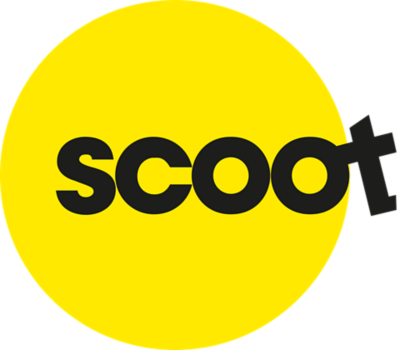What is HRM vs. HCM?
How, when, and where people work is rapidly evolving. For HR professionals grappling with complexity, it’s crucial to understand how different global human capital management solutions support business goals.

Human resource management vs. human capital management.
Human resource management (HRM) and human capital management (HCM) are related but not identical. Understanding the differences between the two is an important step for any business looking to elevate its HR system and capabilities to better support business strategy.
When it comes to HRM vs. HCM, some overlap exists. Both are methods of supporting daily HR operations to achieve business goals and both increasingly rely on technology to optimize productivity and efficiency. But there are also big differences.
Human resource management views the practice of HR through a tactical lens of policies and practices, encompassing traditional administrative duties relative to current and prospective employees. Depending on the vendor, an HRM solution may include additional HR functionality such as payroll. However, as HR duties have evolved in recent years, many practitioners feel the term “HRM” is outdated and fails to reflect the function’s strategic value.
Human capital management describes a more strategic and elevated approach to workforce management that involves strategic workforce planning, creating learning experiences, and developing an inclusive people-first culture to help businesses better adapt to meet challenges. It covers the fundamentals, too—including payroll, time and attendance, and benefits administration—but takes an expansive perspective of HR overall, viewing the function as an interconnected ecosystem worthy of investment. It also takes a broad view of employee management, with an emphasis on optimizing employees’ skills, capabilities, relationships, and insights. Ultimately, an HCM solution aspires to maximize employee potential to produce economic value.
Though HRM and HCM have distinct responsibilities, strategies, and tactics, they both support the same goal: to help HR leaders understand and adapt to people’s rapidly changing expectations of work. People want more than just a paycheck—they want to learn and grow and feel valued. Meanwhile, as the business environment changes rapidly, organizations are looking to nimbly manage skills needs and gaps while engaging talent to deliver on shifting strategies.
3x higher
The human capital ROI is substantially higher in organizations that use human capital analytics to support decision-making.
25% higher
Organizations that employ human capital analytics in this way enjoy higher profitability levels.
The Conference Board, “Telling the Human Capital Management Story: Toward a Strategic Competitive Advantage”; 2022.
What is human resource management?
Human resource management (HRM) is a core business function dedicated to hiring the right talent, managing workforces, and optimizing productivity. While the exact scope, responsibilities, and capabilities of HRM vary by organization, it generally involves implementing and measuring the success of recruiting, hiring, payroll, compensation and benefits, and labor law compliance processes. Performance management, succession management, employee recognition, and training activities are also often in the mix.
HRM arose nearly a century ago when companies began to professionalize their workplaces. As the HR function has grown over the years, technology has become a critical part of HRM. HR and IT have evolved together to improve delivery of HR services by increasing efficiency and accuracy while freeing up time for HR professionals to devote to higher-level work.
For example, human resource management software applications now typically handle—and often automate—at least some of the core functional tasks mentioned above, such as payroll and time and attendance.
Despite these technological advances, HRM reflects a fundamentally conservative approach to human resources. It relies on outdated processes, such as static annual performance reviews, and gets bogged down by administrative tasks and transactions. To elevate the human resources function and allow leaders to focus on strategic areas such as talent strategy, employee experience, and enterprise growth, organizations need to seek a new approach.
What is human capital management?
The idea and discipline of human capital management emerged after human resource management. A distinguishing feature of HCM is its view of employees as important strategic assets who can create and deliver value to the business through their skills and expertise, ideas, and energy.
While encompassing all of HRM’s functions, HCM goes further by taking a more holistic approach to managing employees and development. An HCM mindset views people as the most important company asset. HCM practitioners understand that a happy and engaged workforce is a productive and innovative workforce.
For this reason, human capital management, such as Workday Human Capital Management (HCM), focuses on a skills-based approach for strategic workforce planning; providing learning opportunities for career development; and building a diverse, inclusive culture. Within organizations that take an HCM approach, executive leaders such as the CEO and COO view human resource leaders (such as CHROs) as strategic partners.
CHROs and other HR leaders can leverage HCM solutions to help achieve business objectives in various ways, such as:
Supporting employees’ career development through personalized learning experiences and mentorship
Fostering inclusive, diverse, and equitable workplaces
Gathering and analyzing employee skills data to support a skills-based people strategy

“We chose Workday as a transformative partner to help us understand our employees from a different perspective, treat them as individuals rather than as a group, and change our culture.”
—Executive Vice President and Chief Marketing Officer, Korean Air
How are human resource management and human capital management similar yet different?
At a basic level, human resource management and human capital management share the same focus. They both are fundamentally concerned with workforce needs and employee performance to drive business success.
The fact that the approaches share a common goal means that they are sometimes used interchangeably, sparking confusion. It’s important to understand both the notable differences and significant similarities between HRM and HCM.
Differences between HRM and HCM.
Scope of focus: HRM typically focuses on day-to-day people management functions and the performance of related administrative duties. HCM has the same functionality but encompasses a broader outlook that includes strategic talent management and the view of employees as valuable assets to be developed.
View of employees: HCM practitioners are more likely to view employees as strategic investments that deliver returns in the form of both economic value to the business and employee satisfaction. HRM is also concerned with employee training but may be more focused on the day-to-day administration of learning management systems.
Technology needs: An HR management system (HRMS) typically handles payroll, applicant tracking, benefits, and performance management. An HCM system includes these functions while also offering more capabilities and insights. For example, an HCM system such as Workday HCM will leverage HR data (such as payroll data, skills data, and so on) to integrate across HR functions and other software applications, such as a financial management system, while an HRMS system may not be able to integrate data across various systems. HCM systems, including Workday HCM, are designed with cloud computing at the core so they can remain adaptive to changing workforce and business requirements.
Learn more about different HR systems.
Similarities between HRM and HCM.
Both HRM and HCM encompass core HR capabilities including payroll, benefits management, recruiting and hiring, onboarding, and labor law compliance.
HRM and HCM both involve talent management, including performance management and training.
HRM and HCM both can support the needs of small and medium-sized organizations. The advantage of leveraging Workday HCM is that our cloud solution scales to meet the changing needs at every stage of growth for organizations of all sizes.

“Workday has enabled us to build a strong digital foundation from which we continue to hone our strategies to manage change and grow in an agile way.”
—Director of Human Resources, Scoot
Utilizing HCM for business success.
Businesses use both HRM and HCM to achieve business goals and drive results.
Both HR approaches help to ensure that the organization recruits and retains the right talent. Both enable employee and business success through training so that teams can perform in ways that meet marketplace demands. And both HRM and HCM rely on data to understand the workforce, create personalized employee experiences, and nurture professional growth.
However, not all HRM software is the same. Among the factors that set Workday HCM apart is that AI is embedded in its core. That gives leaders the capabilities they need for data-driven decision-making—such as augmented analytics that surface insights from vast workforce datasets, and learning resources curation and task suggestions to customize the employee experience and support productivity and professional development. As businesses face both talent crunches and an accelerating pace of change, AI can help them meet these challenges by supporting a skills-based approach to talent management. HCM software can map the workforce skills landscape, identify gaps, suggest training, and align talent with opportunities across the organization. In this way, modern HCM platforms drive workforce agility at scale.
Global companies such as Levi Strauss & Co., have achieved business objectives while transforming HR through HCM systems. And businesses such as Club Med have been able to identify and retain top performers while using HCM platforms to support a broader digital transformation strategy.
Both HRM and HCM are concerned with meeting workforce needs and supporting employees across the organization. Top performance in the HR realm, as within so many other functional areas of business in the dynamic business landscape, requires the right technology to flexibly meet each organization’s unique needs.
What sets a cloud-based HCM apart.
Workday HCM is built from a consistent security model and offers a unified user experience that evolves to meet changing business objectives in a changing world. The intuitive user experience also ensures that customers are always on the latest version with up-to-date capabilities, whether on a browser or a mobile device.
With the right HCM system, HR departments can focus on what matters: talent strategy, employee experience, and long-term growth. Workday HCM enables you to:
Understand and guide the business with a secure and unified data foundation
Empower your people with delightful and personalized employee experiences that drive engagement and productivity
Get ahead of change with a unified foundation that connects HR data and processes across core HR, talent, payroll, and workforce management
Build a future-proof and competitive workforce that can adapt and grow with a skills-based talent strategy